Who Makes The Best Handguns? Glock vs Smith and Wesson vs Canik
Good morning everyone, this is John with gun.deals and today we’re gonna be doing a comparison video between some pretty cool handguns, specifically, we have the Canik Mete SFT, the Glock 17, this is the Gen 3 model, and the Smith & Wesson M&P 2.0 Compact optics ready, but before we get into that, if you don’t know, gun.deals is a website that provides you with some of the best products and prices within the industry, so whatever it is that you happen to be looking for go ahead and check out gun.deals, they probably have a link to it for the best possible price. It should be stated that gun.deals does not sell or buy anything, they only provide links and point you in the right direction, so whatever it is that you’re looking for go ahead and check them out, they probably have a link to it for the best possible price. With all that out of the way, go ahead and like, share and subscribe as all that sort of stuff does help us out quite a bit, also comment literally anything down below.
With all that out of the way, full disclosure on all of these handguns is that we have no affiliation with any of the makers of any of these handguns and we paid our own money for them. So, to make this video as concise as possible, we’re going to go through each of the guns in a very specific way. So, first we will go through the slide and we will discuss the slides of each of the guns, we will go over the grip, the trigger and then lastly the shooting dynamics.
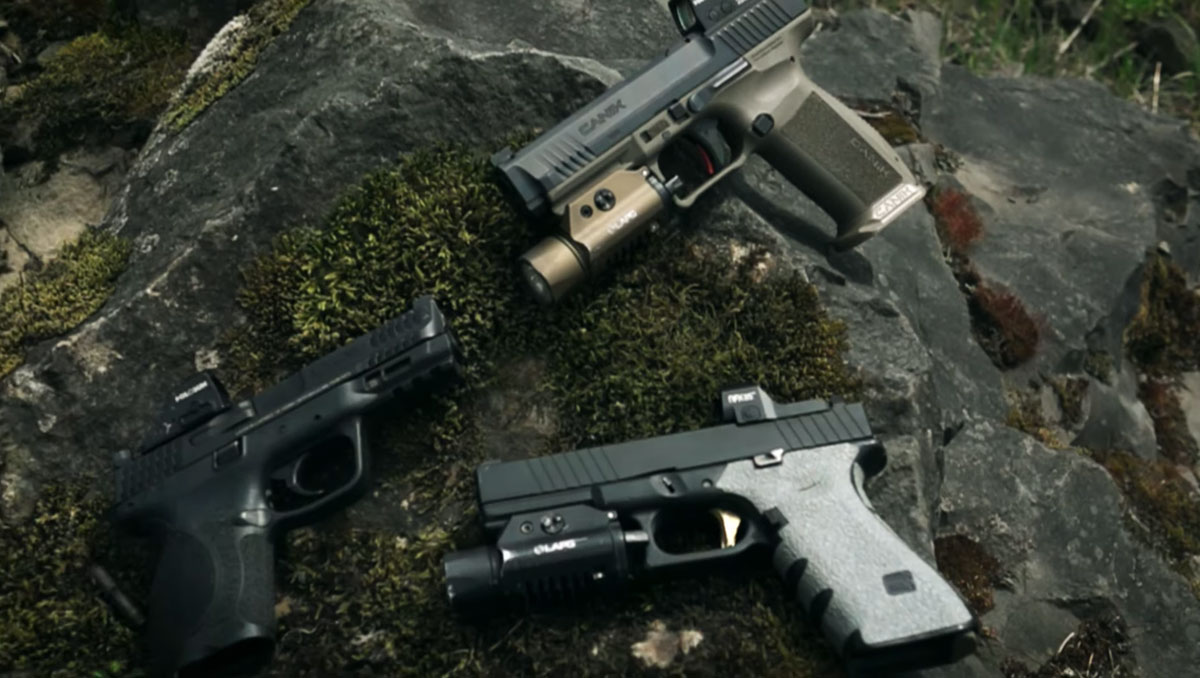
Slide
Canik Mete SFT
We might as well start with this one here, since we have it here, this is, of course, the Canik Mete SFT. There are a lot of different models of Caniks and they are all fairly similar with some differences though, again, we are specifically talking about the 4.5-inch Mete SFT.
Wikiarms.com Search Engine Results
The slide on the Mete SFT has forward and rear serrations that do work quite well. The finish on it has help up quite nice, it’s in this sort of Mete black-anodization. The cuts themselves, the serrations are grippy enough to use without being too large that they’re gonna cut up your hands. The machining work on the slide is actually done quite well, there aren’t really any sharp edges. This one here does, of course, come with standard iron sights that are true iron metal sights. These ones here are three-dot variety which is basic but at least they are metal sights.
Very importantly on all of the Metes is they all come cut for an optic. The one knock on the optic cut is that unfortunately it’s for the smaller RMR CC or RMS shield pattern so it is a smaller optics. Currently I have a 407 K mounted to it, but the very nice thing about the cut is that it is so low in the slide that even the standard height sights co-witness in the bottom of the red dot, so if the red dot were to go down you still have iron sights that do work and co-witness through the glass. Even though the Metes are cut for the smaller optics you can still get a ton of performance.
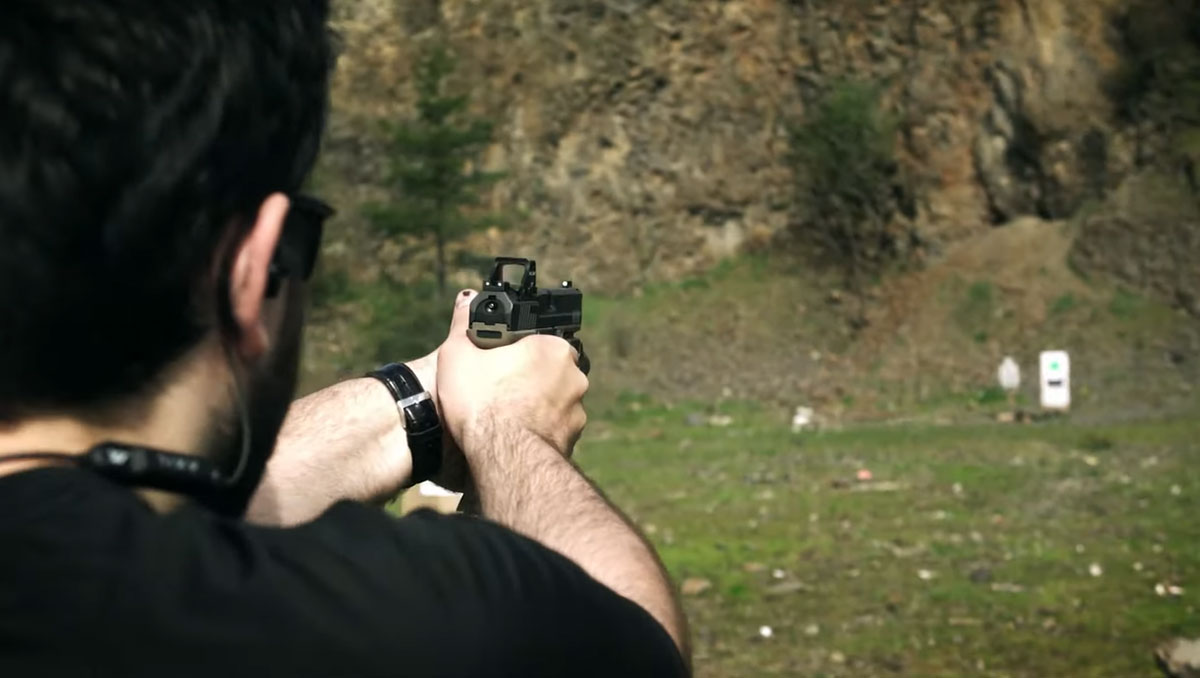
The actual mounting system is a plate system, so it comes, I believe with four or five different plates that will adapt to specific models of small sights. This one here, again, the 407K mounts perfectly in one of their polymer plates, so that it’s nestled forward and back therefore giving it a tighter, more secure fit in the actual optic cut itself.
Currently they actually do make an aftermarket adapter for the slide so that you can mount the full size RMR plate, so I think it’s about an extra 60 bucks, but, again, there is an aftermarket there, if you want to use a bigger, larger red dot they do make aftermarket adapter plate for the Mete series of pistols.
Smith & Wesson
Moving on the Smith & Wesson 2.0 Compact optics ready, this is a slightly smaller gun than the other two though they are four and a quarter inch versions and, of course, the full-size Smith & Wesson M&P 2.0’s are going to be very similar to how this one works.
Wikiarms.com Search Engine Results
On the M&P 2.0 you do, of course, have forward and rear serrations. They are actually a little bit better than what you will find on the SFT. Smith & Wesson kind of has these really nice scalloped designs, they’re very aesthetically pleasing, at least to me, and they are quite functional as well, giving you a ton of grip. Smith & Wesson has also done a great job of machining the slide itself, everything is done to a very nice degree, there are no sharp edges and everything is quite nicely rounded radiused on the edges to get it in and out of a holster a little bit easier.
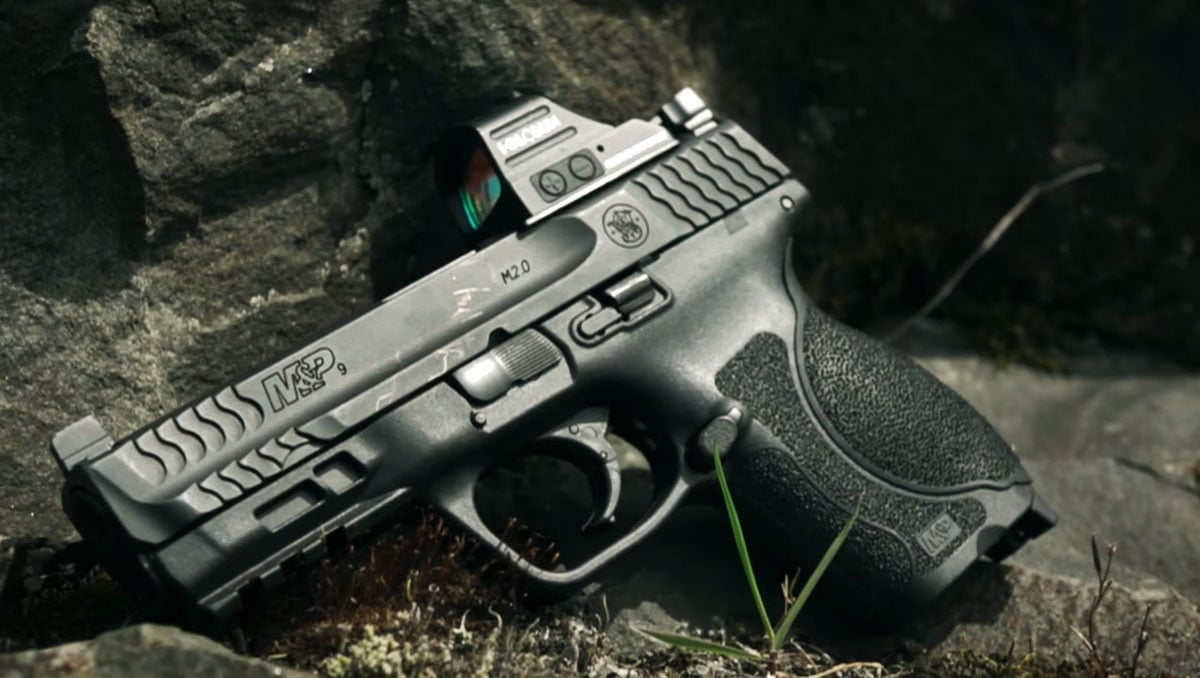
Stock on this model which is, I forget the exact number of this model, are suppressor height sights. That is very nice, they are tall three-dot sights, but, again, they are suppressor heights so if you did want to throw in a threaded barrel with a suppressor on it or what have you, you will still be able to use your iron sights. On top of that, with the full-size optic cut that they have here the suppressor height sights do co-witness through the bottom of the optic which is quite nice. The one thing that I will say about their optics cut is that, while it is more adaptable than some of the other optics cuts on the market, it does leave a bit to be desired in terms of fitness specifically with the 507C that I have mounted currently, while it does match up perfectly in the rear, there’s quite a big gap in the front so the optic itself is not actually perfectly secured forward and back within the optics cut though, again, with the aftermarket solutions you can get a specific adapter plate for your specific optic, so the slide on the M&P 2.0 overall is very, very good.
Glock 17
Moving on the Glock 17, this one here, as you can probably tell, has an aftermarket slide and barrel. Throughout the video, you will probably hear me complain or say some bad things about clocks and then say that there is an aftermarket solution to fix the problem. While the aftermarket is very important and it is, in some cases the main driving factor for some people, it’s not going to be the most important thing in this video, so while I will knock the Glock for certain things the aftermarket does in general fix most of those issues.
Wikiarms.com Search Engine Results
That being said, the standard slides on the Gen 5 Glock 17 do have forward and rear serrations. They’re fairly subdued, but definitely still usable. Unfortunately, the standard slides on Glocks are not cut for an optic and they come with the worst sights on the market which is pretty unfortunate. Again, aftermarket solutions will fix all those problems. If you do want a factory optics mounting solution you have to go with their mounting system, their MOS system which uses, from what I’ve heard, some fairly inferior plates but, again, there are always aftermarket solutions. Case in point, this is actually a very inexpensive AimSurplus slide with a very large RMR-styled optic on it. So, the standard slide on the Glock 17 is the worst and the best, I’m actually gonna have to give it to this specific M&P 2.0 as it does come with factory suppressor height, also I forgot to mention earlier, the front sight is actually night sight as well and it is cut for the larger, more preferable style of optics. Since this one here has the best slide we’ll go ahead and talk about its grip.
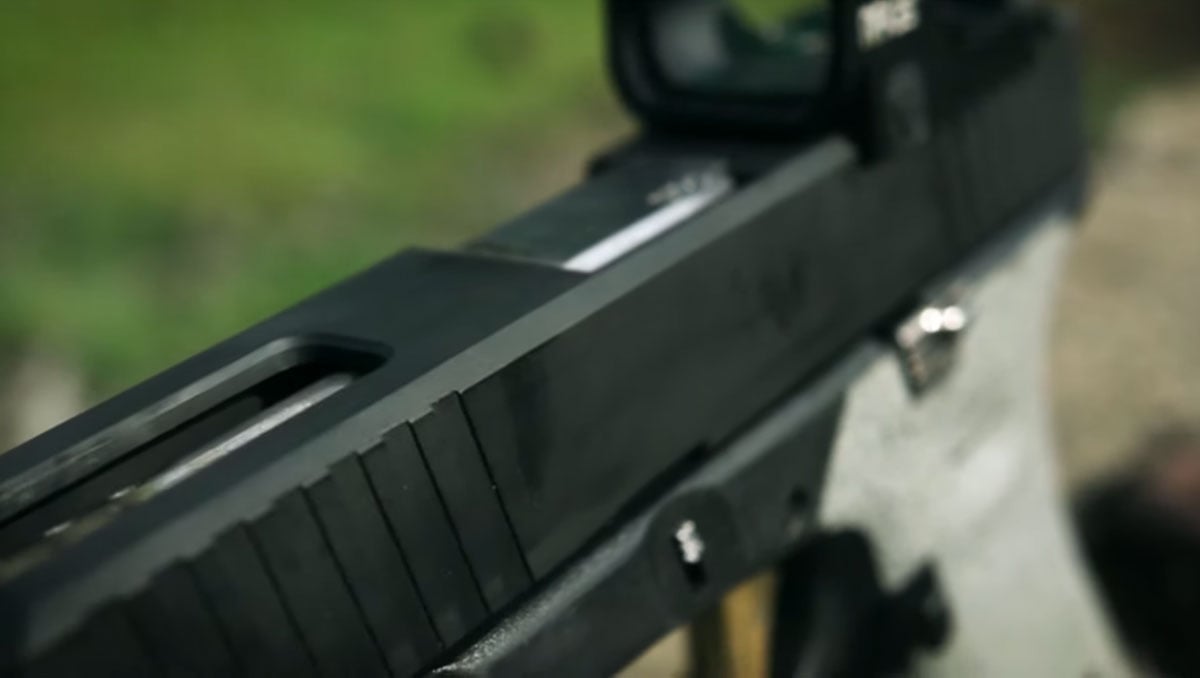
Grip
Smith & Wesson
Getting into the grip itself, if you’ve held a lot of other handguns this is going to be a very familiar to you, it has a very natural feeling grip angle. On top of that, this one here comes with four different back straps for different-sized hands. As you can tell, the grip looks very fat on here just because currently I have the largest back strap on, not that I have the largest hands, but personally, it just feels good and I’m just kind of messing around with it, but, again, if you want a different height or a different size grip on it you can simply swap that out.
This is a smaller frame which is a Glock 19-ish frame, it’s a little bit bigger than a Glock 19 frame, so my pinky is toward the bottom, but with a magazine installed I have a little bit of extra room so if you have bigger hands they’re probably gonna fit on here just fine. The texturing that is being used is very good, I will be, it’s the most aggressive texturing out of all three handguns which I personally prefer, I would like more texture in more places, please.
The problem with the texture, of course, is that it stops about 70% the way up, so the texture itself is very good, I would like to have more of it. You definitely feel it when shooting, it will dig into your hand and give you a very, very secure grip and so I do like that quite a bit. When we get into controls, even though I have smaller-ish-size hands I can still reach the magazine release without breaking my grip.
The slide stop and slide release on the M&P 2.0 is ambidextrous, so you can actuate from either side which is going to be nice for lefties so you don’t have to do that weird thing with your trigger finger.
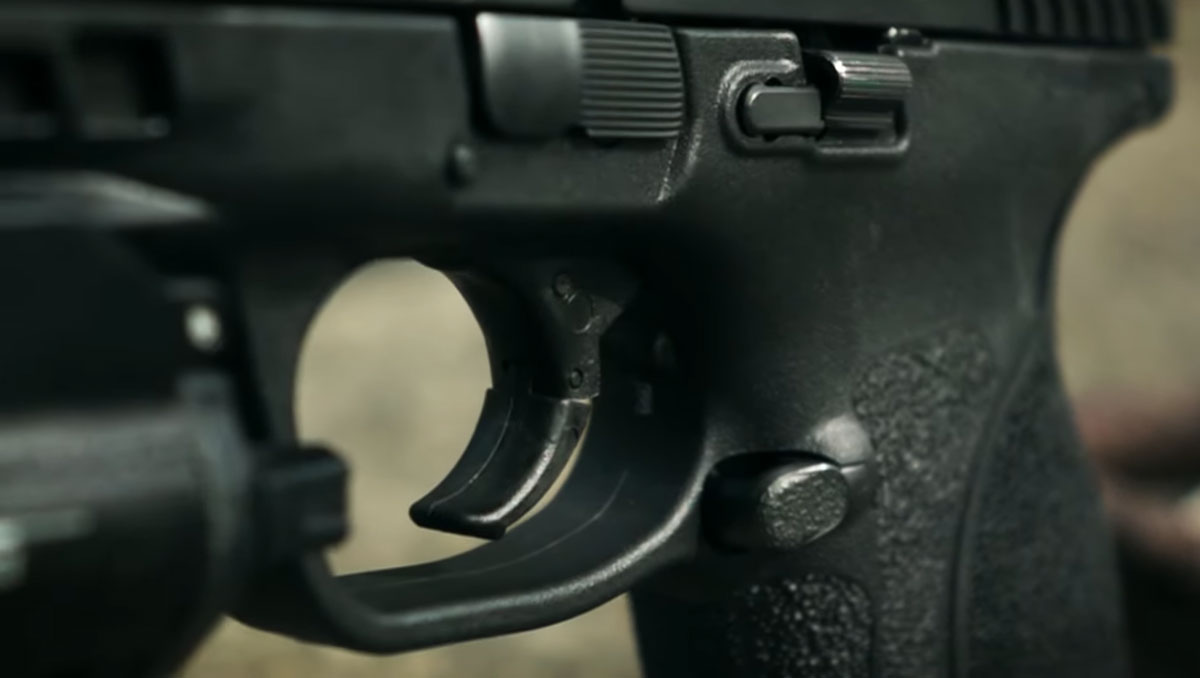
Overall, the ergonomics and the controls on the gun are in the proper places and I haven’t had any issues personally with my hands and my shooting style of a very high grip with accidentally actuating the slide stop and slide release. It does, of course, have an accessory rail up front which will accept any sort of Picatinny attachments. Currently I have a LAPG WXL slide rail light, which is a silly name, they should shorten that up a little bit, but the light has been working quite well and it fits all TLR -1 holsters that I’ve tried and I do like it quite a bit on the M&P 2.0.
Glock 17
Getting into the Glock 17 Gen 3, again, you will notice that this is not a stock slide, I actually have a Handleit grip on here, which helps to fill out the trigger or the finger grooves that are absent on the newest Gen 5 but on this Gen 3 grip there are the finger grooves up front which some people will like and some people will dislike.
Glock also has a more aggressive angle which personally for me the Glock is the gun that I kind of learned how to shoot decently on, and this specific Glock I probably have anywhere from 10 to X amount of rounds on it. I have a lot, a lot of time on this gun and so the grip feels very natural to me.
The problem with the grip is the texturing is the worst, there’s basically none on it whatsoever, it was very heavily used and abused which is why I have these Handleit grips on there.
The Handleit grips, like I mentioned, they do provide more texture, however, it’s not an aggressive texture like a really good stippling job will give you, it’s more of a rubbery kind of just grippy texture versus like something that’s like serrated and it going to really dig into your skin.
The frame itself is good, all the controls are in the right places, the magazine release in my hands, again, it’s a little bit tight or a little bit high to reach but, again, I do have smaller hands but for your hands it may be a little bit easier or a little bit more difficult.
For me, again, the controls are in the right places, the slide stop, slide release works just fine. It is not ambidextrous so if you are someone who needs a left-handed slide release, then you will probably want to look in the Gen 5 which does have ambidextrous controls that are absent on the Gen 3.
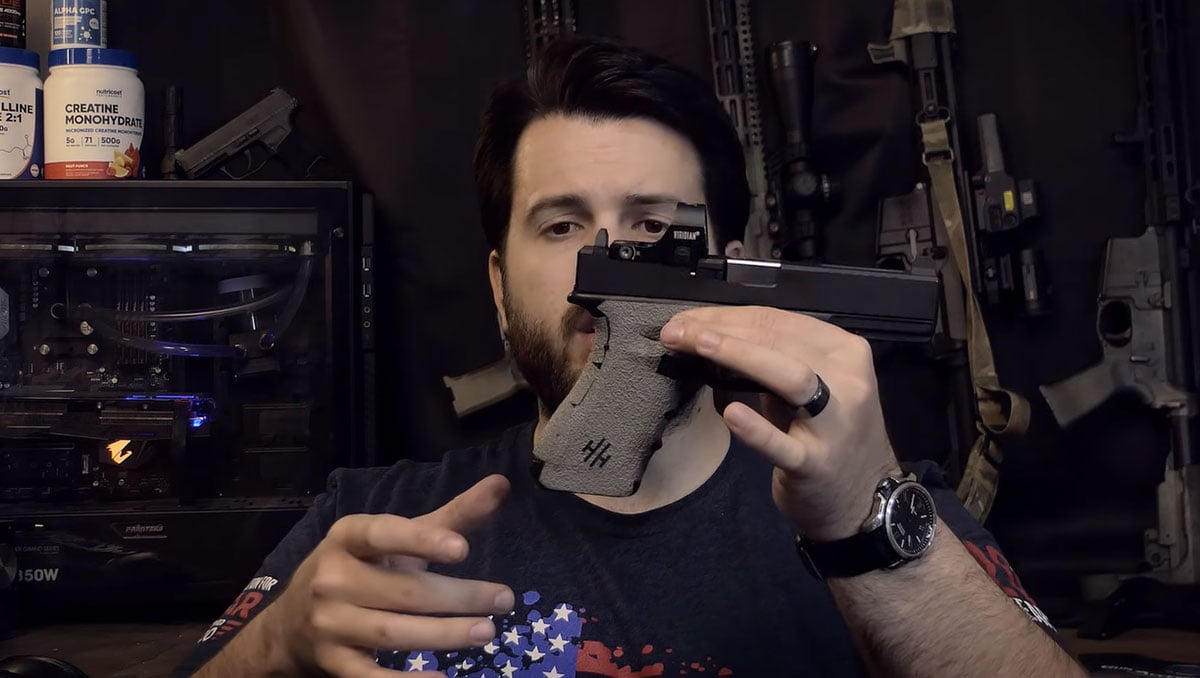
Overall, the grip is just fine, one thing that I will knock it for is Glock has a slightly proprietary rail, it’s close to Picatinny, it’s not quite so some aftermarket lights may not work with it and they might need a specific Glock rail adapter versus just a straight up Picatinny rail that will work on the other handguns. The trigger guard is, it actually does have some texture on the front and it’s fairly flat which some people do like to lock their finger around while shooting. I don’t shoot like that, I shoot with a very standard thumbs high grip, and, again, I don’t have any problems with the slide release either holding it open accidentally or holding it closed and it not locking back on the last round.
For me the worst part about the Gen 3 grip is that it’s actually almost an anti-magwell. This one here is a little bit concave here in the middle, which makes your magazine changes not difficult, but it is the most difficult out of all three of these handguns, so if you come in at even just a slight angle you’re gonna get bound up very easily. Again, that can be remedied with an aftermarket magwell adapt, you can see here I have a block in the back because I used to always get the back of the magazines hung up on this little shelf in the back here. Not a big fan of that design choice, and, gain, in the newer Gen 5 models that has been remedied to a decent degree that kind of have a mini magwell if you will.
Canik Mete SFT
Getting into the grip on the Mete SFT, this is gonna have what more people would consider to be a natural grip angle, so it has a pretty shallow grip angle meaning it’s not angled and canted forward like the Glock. On the Glock that’s there to help you control the recoil though as we’ll talk about later, the Canik does shoot very, very well. The texture itself on the Canik, and this one here does have an interchangeable back straps as well, so it’ll fit whatever hand-size that you are, figured out what works the best and then just stick with that. The texturing on the slide, on the sides and the front is this very fine sandpaper-ish feel, again, it does that thing where it stops about 70% the way up and I wish they just had more of it. Overall, it’s a good blend of grip and comfort, it’s nowhere near as aggressive as what you’ll find on the M&P 2.0 though for some people they’ll take that trade off because it is a little more comfy. The texturing on the back strap is kind of this diamond-ish texturing, there’s not much of it there so I will double the lines per inch there and, again, put it in more places though that’s gonna be my complaint on basically every factory handgun on the market. Getting into the controls on the SFT, you do have an ambidextrous slide stop and slide release, so they’re quite long, they’re fairly low profile so I don’t think anyone is going to be accidentally hitting them. It has a very good magazine placement even for my smaller hands so I don’t have to move or break my grip.

The magazine release texturing actually ha s a good amount of grip on it though it’s not a tall, extended magazine release that you would accidentally hit. Moving forward onto the grip we actually have a little bit of texturing where you would put your normal on a thumbs or thumbs forward grip like I tend to use which means that I get just a little bit extra grip than I will on either of the other guns that are very, very slick where you would put your thumb. The accessory rail on this is a standard Picatinny accessory rail, so, agai, it will accept just about anything on the market. The magwell on this gun, it comes with an aftermarket magwell. You don’t need it because the magwell itself is a very nicely beveled, however, if you want to make your reloads even faster, even easier, you have this very nice aluminum magwell included in the box. So, when we talk about which grip does it best out of the box, if you’re fan of aggressive texturing like I am, even though this one here is not quite as speedy when it comes to reloads, it doesn’t have quite the grip up front like this one does. Personally, the more aggressive texturing I prefer, however, I think most people would probably say that the grip on the SFT is better. It’s also bigger, so if you have bigger hands than I do, it’s gonna to more easily fit on there than it will on the M&P 2.0 Compact though, again, the M&P 2.0 full-sizes will also remedy that issue. So, they’re very, very close, it’s gonna depend on whether you like the texturing like I do, the most aggressive texturing possible, or if you like some of the accoutrements if you will on the SFT.
Trigger
Canik Mete SFT
The trigger for me is a very important part of the handgun though it should be noted that any handgun that you have, if you learn the trigger and learn how it operates and to be consistent with that trigger, you’re going to have a high level of performance. That being said, the Mete SFT has the best trigger by far out of all of these guns. You have a normal amount of take-up that you will have in any sort of striker-fired gun, you hit a very defined wall and then there’s a little bit of a rolling break and then it kind of just goes at about four, four and a half pounds. So, the trigger dynamics are not really great I would say, because you have that normal take-up and then you have a little bit of a rolling break, but the break is so light and crisp that you kind of forgive the fact that it kind of rolls through it a little bit rather than just being a very hard to find wall and then a little break. And, again, the trigger is light, the reset is very short, very, very short and, again, once you’re all back on the wall you only have that tiny little bit of rolling break at, again, four, four and a half pounds.
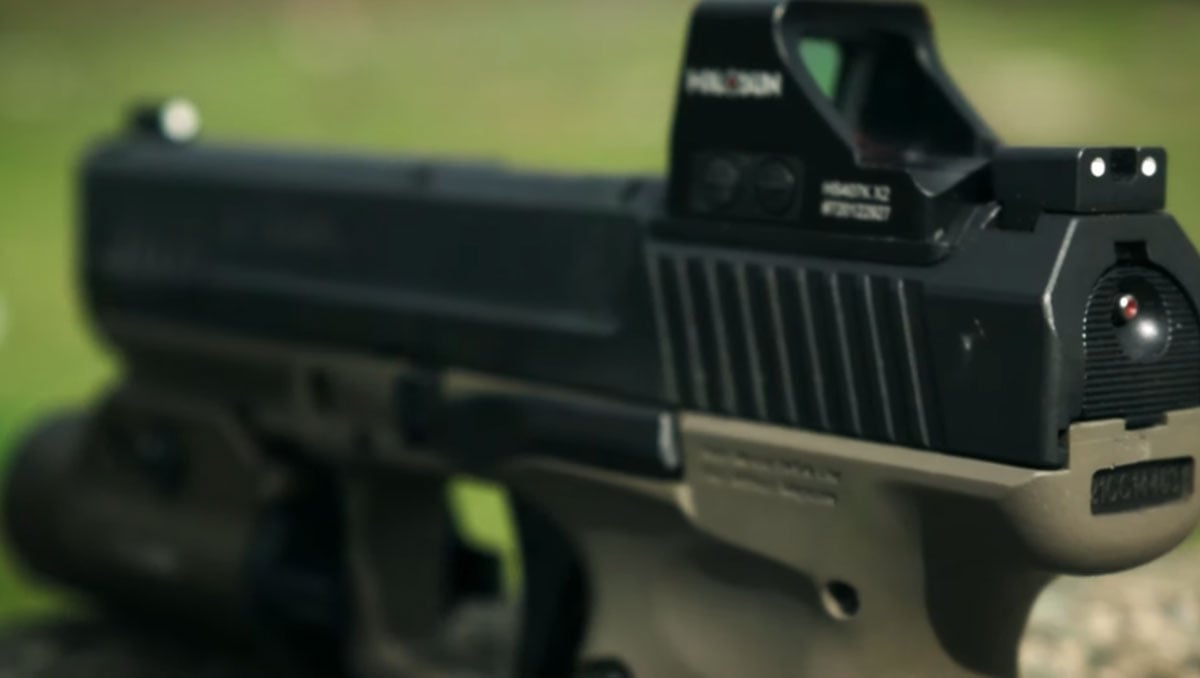
Glock 17
Let’s talk about the Glock. The Glock, of course, there are a million different aftermarket options from full on trigger kits to disconnectors to spear springs and a wide variety of things you can do to fix a Glock trigger or at least to make it a little better. I personally am actually a fan of stock Glock triggers for concealed carry or duty use. Getting into the trigger on this specific Glock 17 Gen 3, this is, even though it doesn’t look like it, this is a mostly stock trigger so it’s using the stock sear spring, the disconnector, everything is just OEM Glock on the inside except for the trigger shoe and the trigger bar, so while it’s a little bit different and a little bit enhanced, overall, the trigger weight and pull are going yo be very similar to like a standard Glock. You have a standard amount of take up that is defeating the internal safeties, you have a pretty nice wall and then there’s a bit of a rolling break.
While this trigger dynamics is very similar to the Canik Mete, the Mete’s trigger does the same thing but two pounds less making it a little bit easier for most people to be more accurate. Again, I’ve made shots at 120 yards with all of these guns and each one were able to do three, four or five in a row if I was doing my part at, again about 120 yards standing. The trigger, again, it has that nice amount of take-up that’s very standard, it’s a fairly defined wall, a little bit of a rolling break, a little bit of creep and then it breaks at about six pounds, and the reset on Glock is very good, it’s actually a little bit longe than the Canik but not bad, so once you’re actually shooting it, if you want to shoot it quickly. The splits on both of these guns are going to be very, very similar, again, the only problem that I have with this trigger is maybe I would take a pound a pound and a half off.

Smith & Wesson
When we move on to the Smith & Wesson 2.0, this is another one of those divisive triggers if you will. The Internet tends to love of hate specific things and the hinge trigger on M&P 2.0. The newest models, these ones here, are kind of getting phased out which is they’re actually at extremely good values right now. The new models do not have the hinge trigger, they have more of the flat-styled, almost looks like an Apex trigger from the factory and those, I have heard are even better than this one. Trigger dynamics are, again, very similar, you have a decent amount of take-up, actually quite a bit of take-up I would say and you hit a very defined wall and then there’s almost no movement, no creep whatsoever and it breaks, again, five and a half-ish pounds. It’s gonna be within the margin of error with the Glock. I would say that the Glock’s trigger is slightly heavier though not by much. Again, we’ll go ahead and go through it again, so you have a normal amount of take-up on the hinge trigger, you hit a very hard defined wall, you build pressure and there’s almost no creep or movement whatsoever before the trigger breaks. That for me allows me to be a little bit more consistent with my slide alignment before I pull the trigger because I know exactly when that trigger’s going to break versus having a little bit of a rolling break, so when I’m actually shooting these guns even though the weights and dynamics are very similar in the trigger I do tend to be more accurate with this M&P 2.0 even though I have significantly less time on this gun than I do on this one and in fact my wife also was able to make very consistent shots who she does not shoot very much at all, maybe 50 rounds a month at most, she has very, very small hands. Her only complaint was that the texture on the handgun was a little too aggressive so, again, that is how I would prefer it.
So, while the trigger dynamics are very similar, the break is more consistent and it’s for me anyways a little bit easier to put the shots exactly where I want them and break that shot when I want it because the trigger pull itself has that basically no creep and then you just add a little bit of extra pressure and it just goes. The bad part about this trigger and what holds it back, for me anyways, is the reset is long, it’s a long reset, it’s a little spongy, if you get used to it you can still shoot it very quickly, I don’t think it’s gonna be holding you back per se but it’s not as nice as the Glock and it’s nowhere near as nice as the Canik. So, the winner when it comes to the trigger is going to be the Canik even though the dynamics are not perfect it does end in a very nice, light, crisp pull that means you can shoot it very quickly and you can shoot it very accurately. Followed up, for me, the Smith & Wesson 2.0 because it is more accurate and more consistent for me even though the weight is comparable to the Glock 17, the Glock 17 for me is just, it has about the same weight, but there’s that a little bit of creep and rolling break that means it’s a little bit less consistent in terms of accuracy than the Smith & Wesson 2.0. The reset is much better on the Glock, it’s much worse on the M&P 2.0, so, again, how you tend to shoot and which one you practice with determine, whether you like that or not.
Shooting Dynamics
We might as well get into shooting dynamics, this is not a stock Glock 17, this one here has an AimSurplus ported barrel and slide. This one here has basically no recoil whatsoever. This is most definitely cheating and that is going to play into the fact that the aftermarket on the Glock can do just about anything, any barrel, any configuration, any slide, any optic, any frame, any trigger, whatever you want to put onto a Glock they make attachments for it. Glocks are very easy guns to shoot for most people I would say, some people would have issues with ergonomics, if you will, it might hurt their wrists or whatnot because they are canted forward at a bit odd angle, but for most people Glocks are very easy to shoot, so this specific gun wins hands down in terms of shooting dynamics but if we’re talking about stock guns the Canik actually shoots very, very soft. This is the 4.49-inch version. I have not shot the SFX which is the full 5-inch version, 5.2-inch version. I would like to very much because if that shoots even softer than this one does then that would be an exceptionally good shooting handgun.

Even though this is just a standard Canik, this is not comped or ported or anything like that. The shooting dynamics of this gun, the speed, the return to zero, at least for how I shoot it, are very close to a ported barrel Glock 17. These are the same size of guns, this one here is a little bit lighter, I believe it’s four and a half ounces lighter or so, but overall they’re the same size, same barrel length, all that sort of stuff, and the ported Glock does shoot better, it does shoot flatter for sure but because of the better trigger and the better reset on the Canik and the fact that even though it’s not ported or comped. It shoots very, very nicely, for a factory gun it shoots phenomenal, I would say, it is excellent on par with almost any handgun out there and especially in its price category because, again, you can pick these up for like 450 bucks. The loser in this category is going to be the Smith & Wesson 2.0 optics ready. This one here specifically is the compact version, this is a 4-inch version. In the video earlier I mentioned that this was a 4 and a quarter inch version, I was incorrect, this is the 4-inch version versus the other two guns which are 4.5-inch guns.
The shooting dynamics of this gun are in no way bad, it is, however, just not as good as the Canik and it’s not ported like the Glock 17 is. This one here up against the Glock 17 would be basically identical, though, again, I do like the texture on the Smith & Wesson M&P 2.0 more and I do like the trigger break more not the reset but I do like the trigger break more which for me is the more important factor. So, the shootability on the M&P 2.0 is good, very good, but I do notice that I have to put in more effort to be able to shoot it quickly and accurately. Anybody can shoot the gun quickly, but to shoot it quickly with a certain amount of accuracy depending on your target size and distance. I feel that I have to put in more effort, considerably more effort with my grip and with my arms to control the recoil, to make sure that my follow-up shots are still landing on target. So, while shooting dynamics on this are good, it is a little bit smaller and it is going to hold it back. I am sure if I had the full-size M&P 2.0 that the shooting dynamics would be on par with the other two guns, though, again, remember that I am talking about the compact so this is at a little bit of a disadvantage though, again, the other factors of the handgun are quite nice. So, at the end of the day, which one of these three handguns should you buy? Well, you should first off buy the one that you can afford, if you can’t afford a Glock 17 MOS then you probably shouldn’t buy it, if you can afford the other two guns and still have some ammo to train, you should pick the one that makes the most sense for you whether you need a one and done gun that is kind of a Glock 19 size or you just want a very fun, very fast, excellent shooting handgun on a budget then you go with the Canik. All of these guns will suck if you don’t shoot them so, what I would recommend doing is getting them and shooting them or if you have another gun already that is reliable enough just use that and get good with it. So, at the end of the day these are all great handguns.
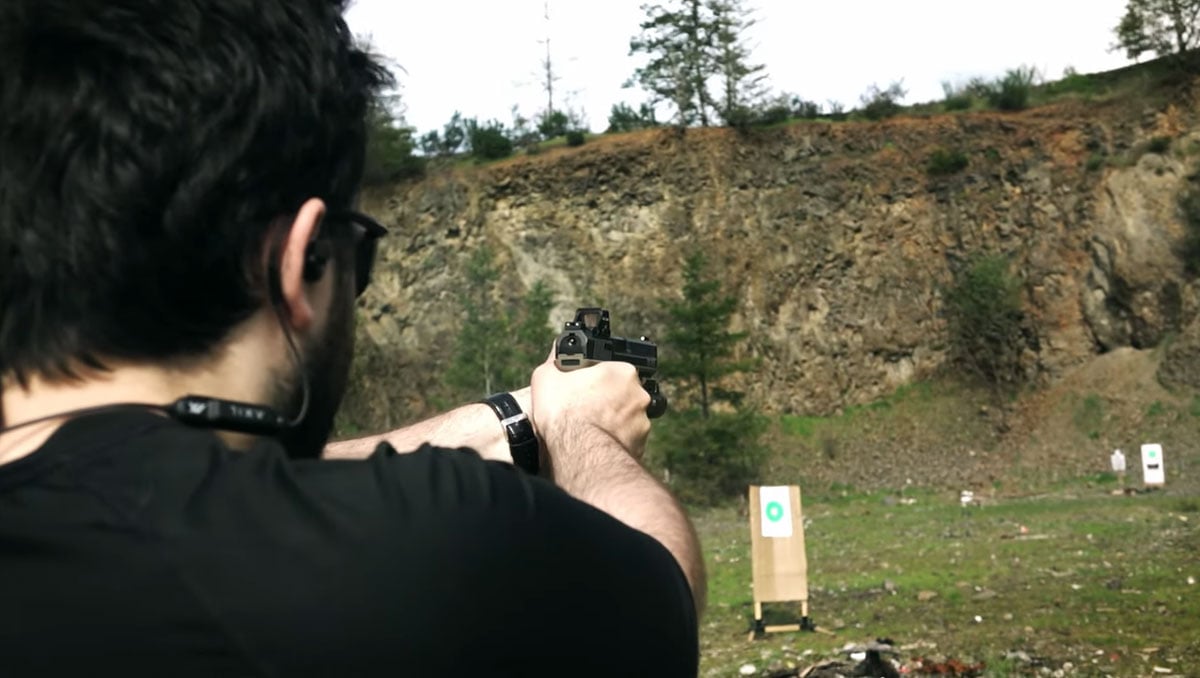
All of them have been perfectly reliable for me. Now I have the Glock for the longest and I have broken several small components on it, but that’s kind of normal when you get into the, you know, 10, 15 thousand round range versus this one here is heading towards the thousand rounds and this one here is barely at the 500 mark. So, while all three of the handguns are excellent for what they are good at, it’s really gonna depend on what you want to use it for, what do you need, what do you want, all that sort of fun stuff and all guns that I would definitely recommend for specific applications.
So, with all that out of the way guys feel free to comment literally anything down below and with all of that, I hope you all enjoyed, thank you once again for watching.
Peace off!





